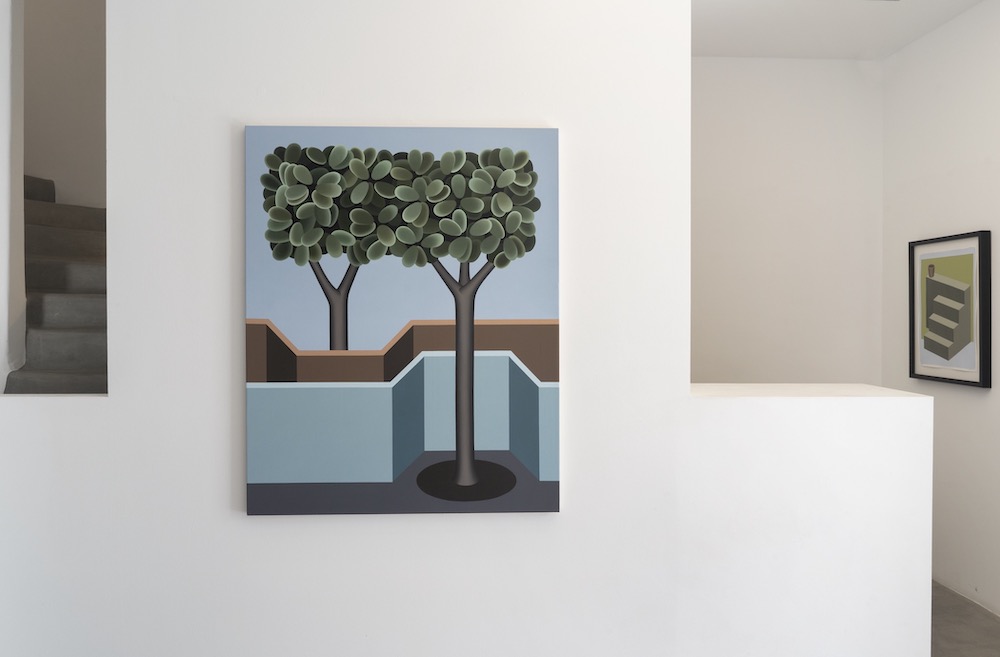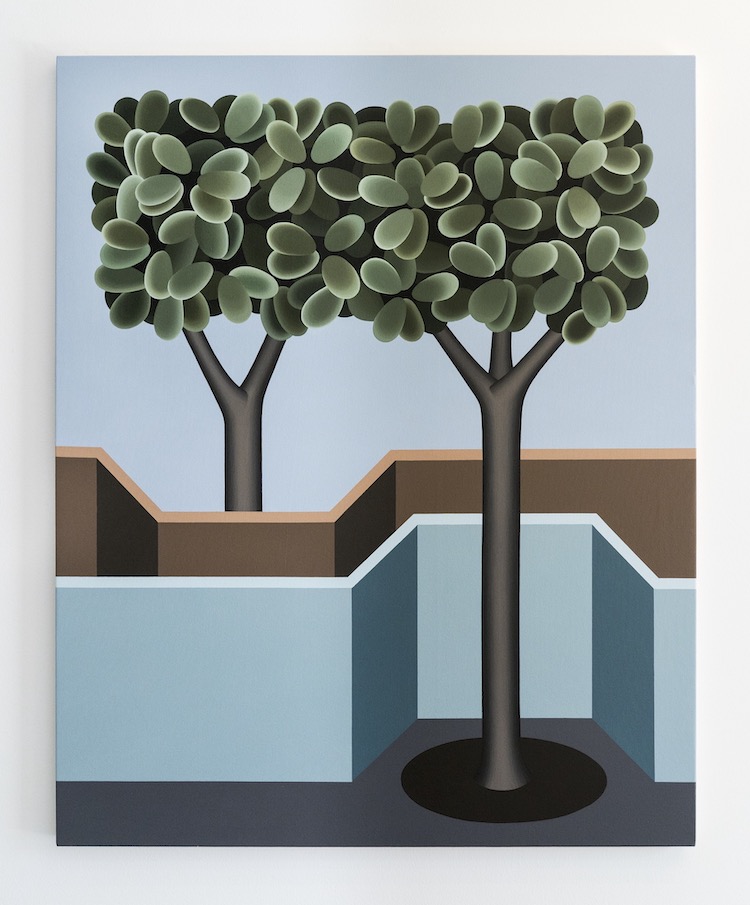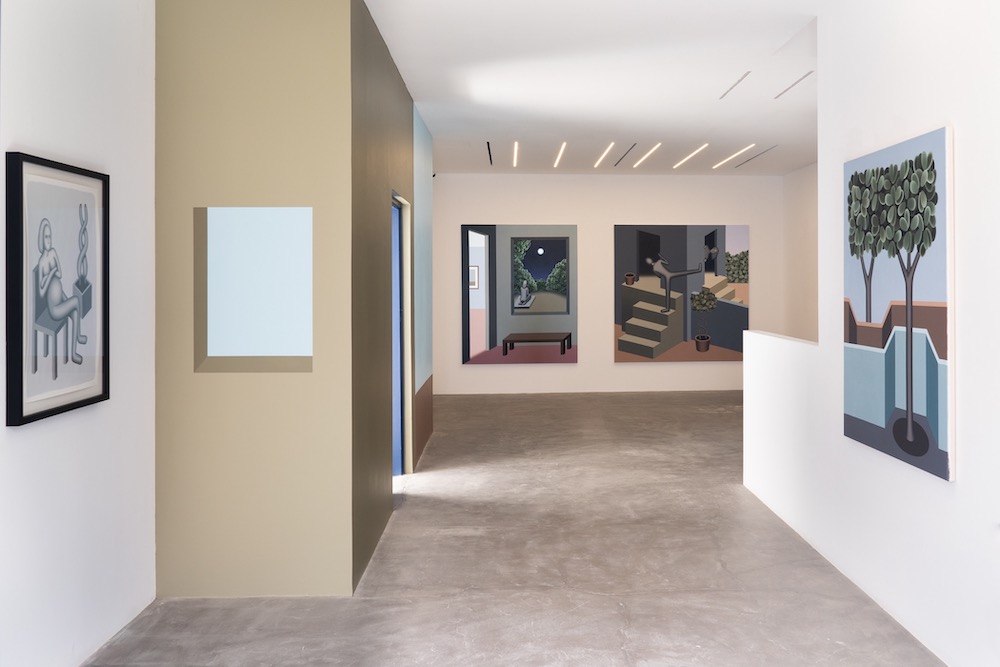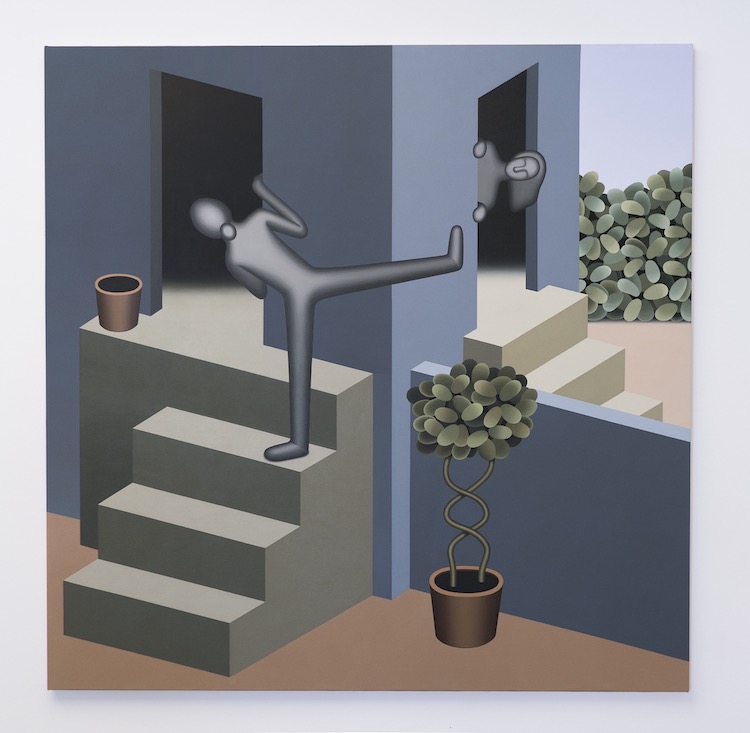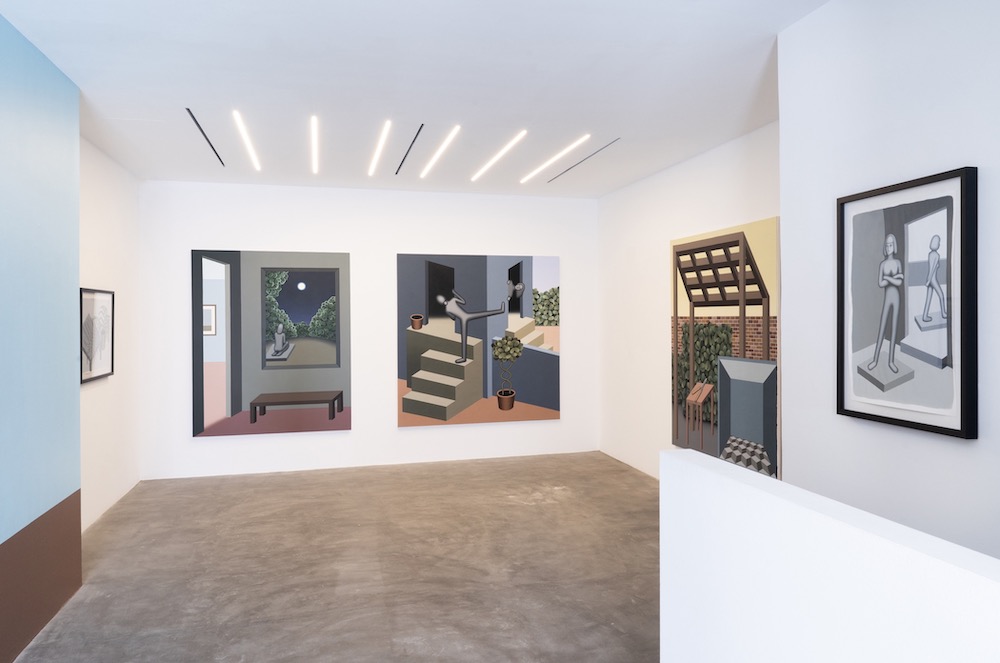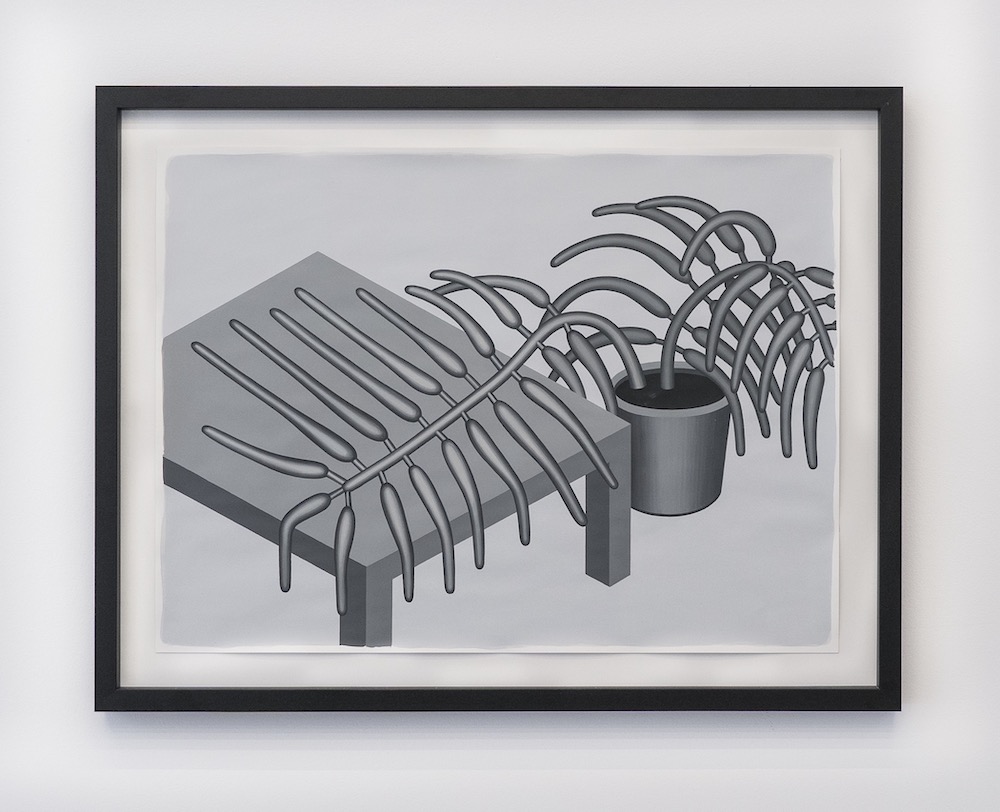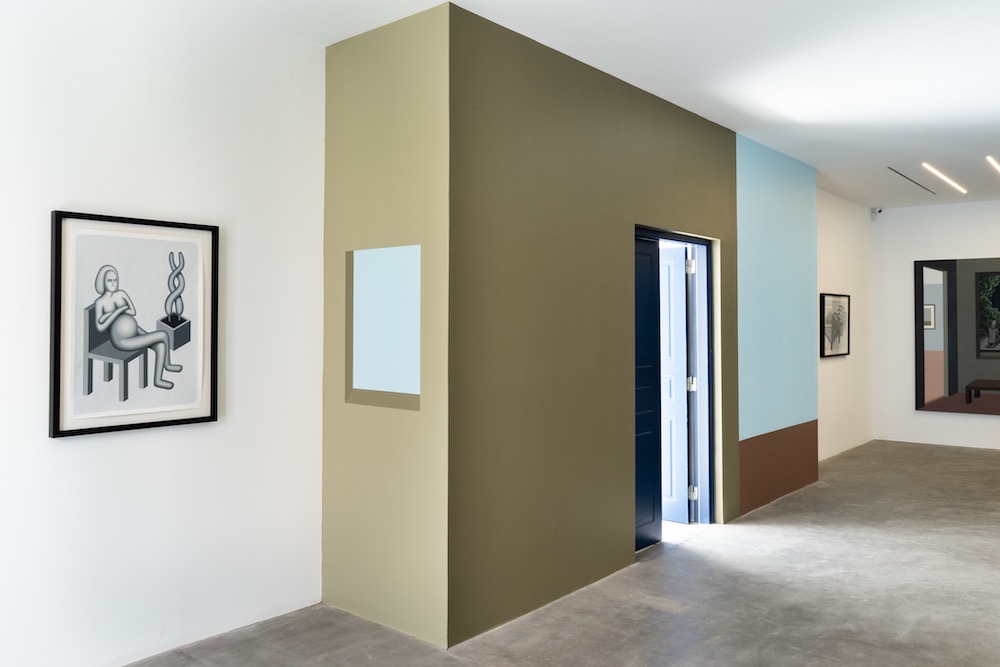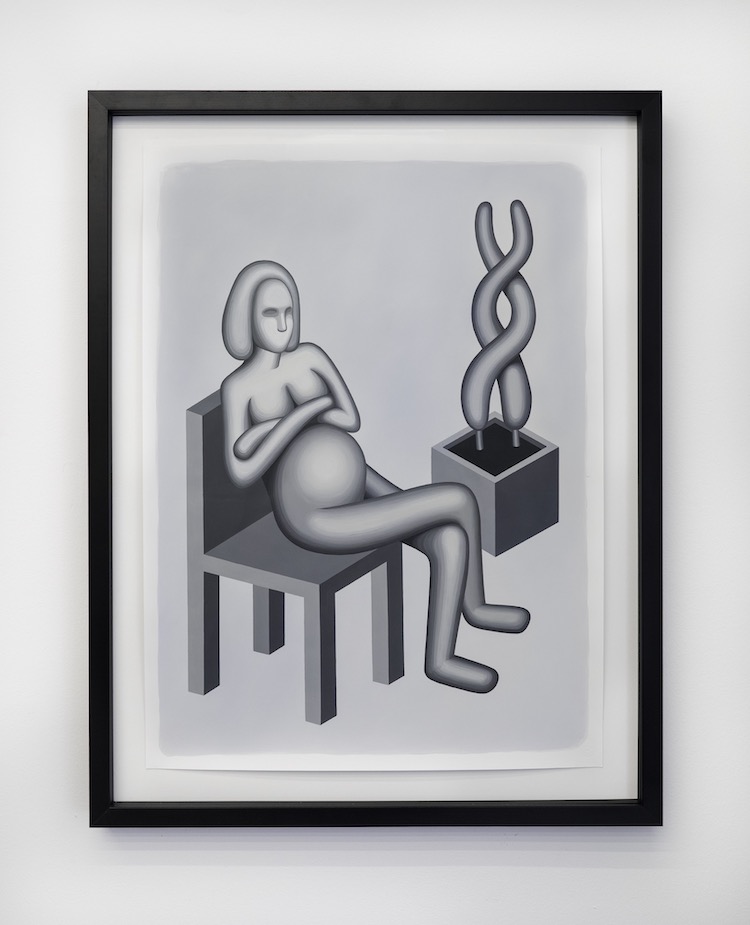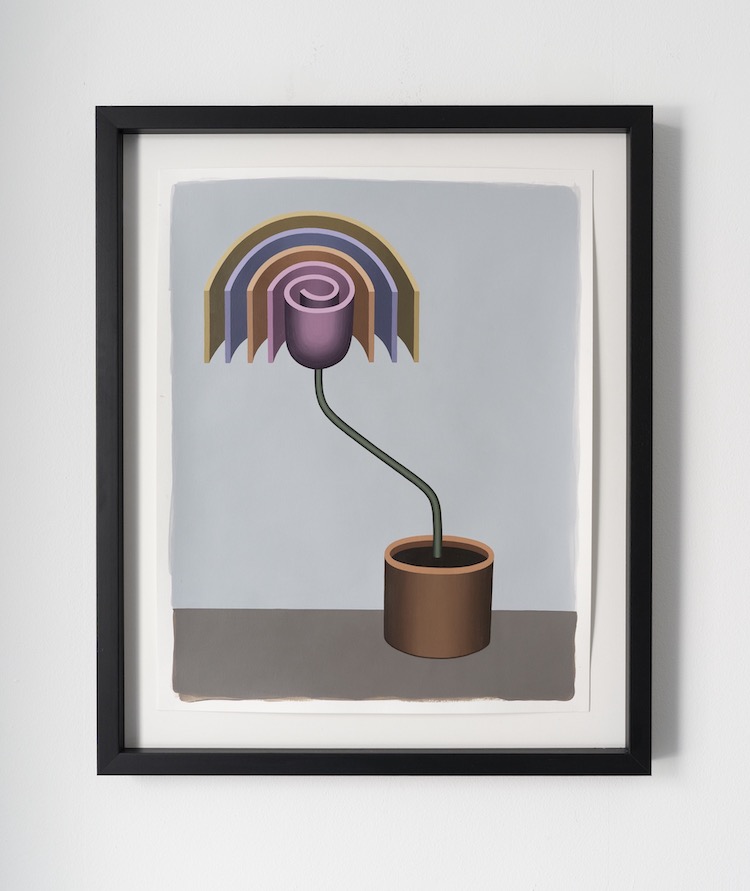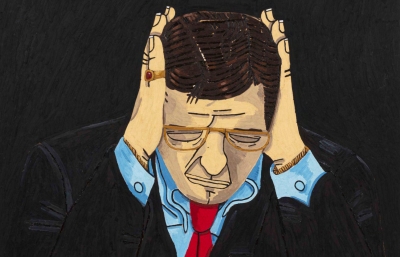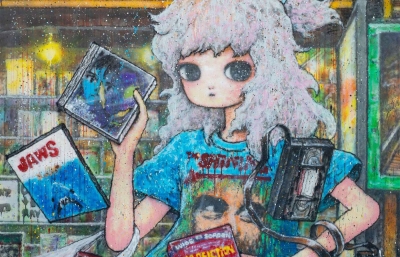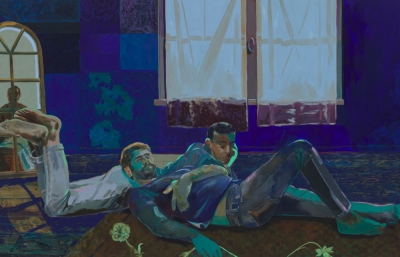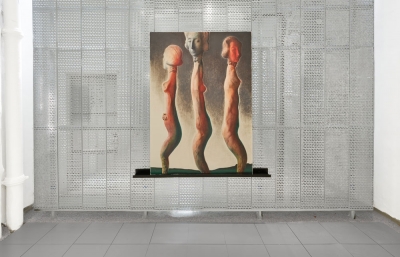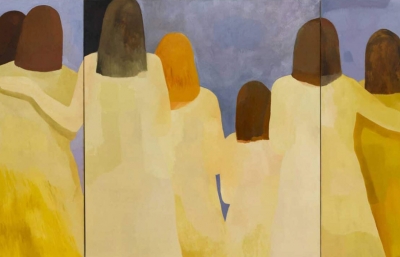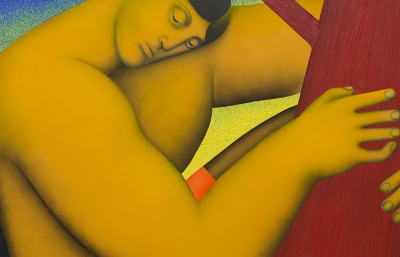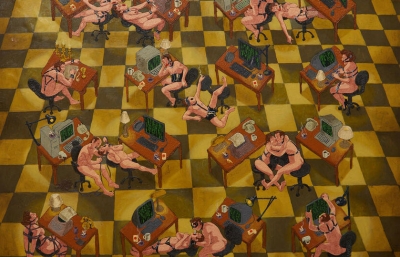Marking her debut presentation in Greece, Dio Horia is currently running the final days of Emily Ludwig Shaffer's solo presentation at their space on Mykonos. Comprising a new suite of paintings accompanied by acrylic works on paper and a site specific mural, An Island Refrain feels like a great introduction of the Brooklyn-based artist's practice, interest, and aesthetics
When thinking of surrealism the works of Dalí or Magritte spring to mind and we can all agree that some of those visuals aren't much of an eye candy. Well, Shaffer's approach to constructing surreal scenery is much softer, appealing, and inviting, as she tends to reduce her imagery to basic forms and coat them with minimalistic, silky smooth surfaces. Using subdued, earthly shades of green, brown, and grey, the scenery feels familiar, untreatning, and is easy to explore, all while being imbued with an atmosphere of pacifying stillness. And within such a likable setting, she constructs images that aim to spark a conversation about female identity, making up for the historic underrepresentation of female art in greater art canon.
Exclusively working with featureless, stoic-looking characters and the plants or objects with ambiguously reduced forms, Shaffer's puzzling visuals show a strong connection with architecture, culminating with a mural that is alternating the gallery's structure. Experimenting with the perspectives, depth, and formative elements in her paintings, she is constructing most impossible relationships between her characters as well as other objects. Frequently depicting them woven together, either with each other or with plants or objects around them, these settings evoke the organic interconnectedness of human existence, but seen through a prism of female experience. “Statues are the remnants of cultures that embody so much of how a society sees its people,” Shaffer stated in the text accompanying the exhibition, revealing the background of her interest in working within such a landscape. Attributing them with other roles beside their historic decorative function, her statuesque muses are now actively interacting with each other and with their environment, this time as the main and sole protagonists. —Sasha Bogojev



